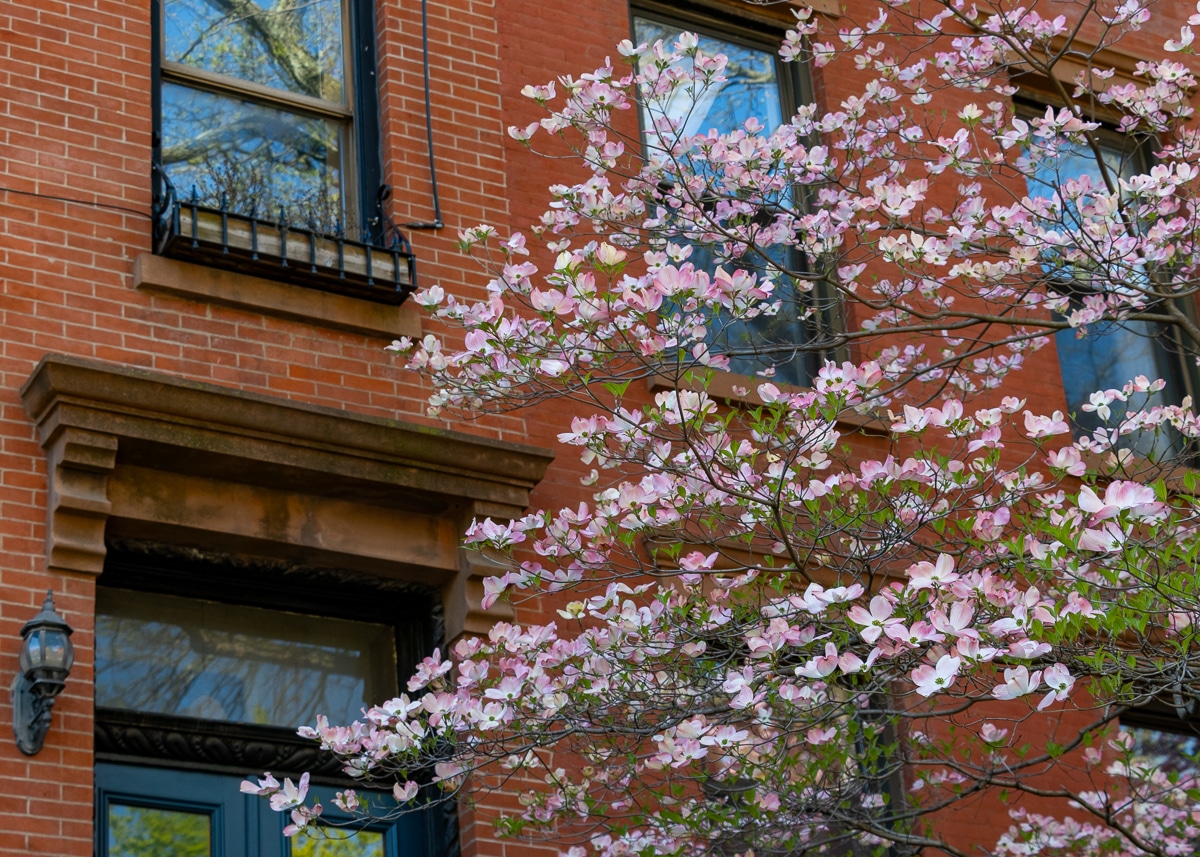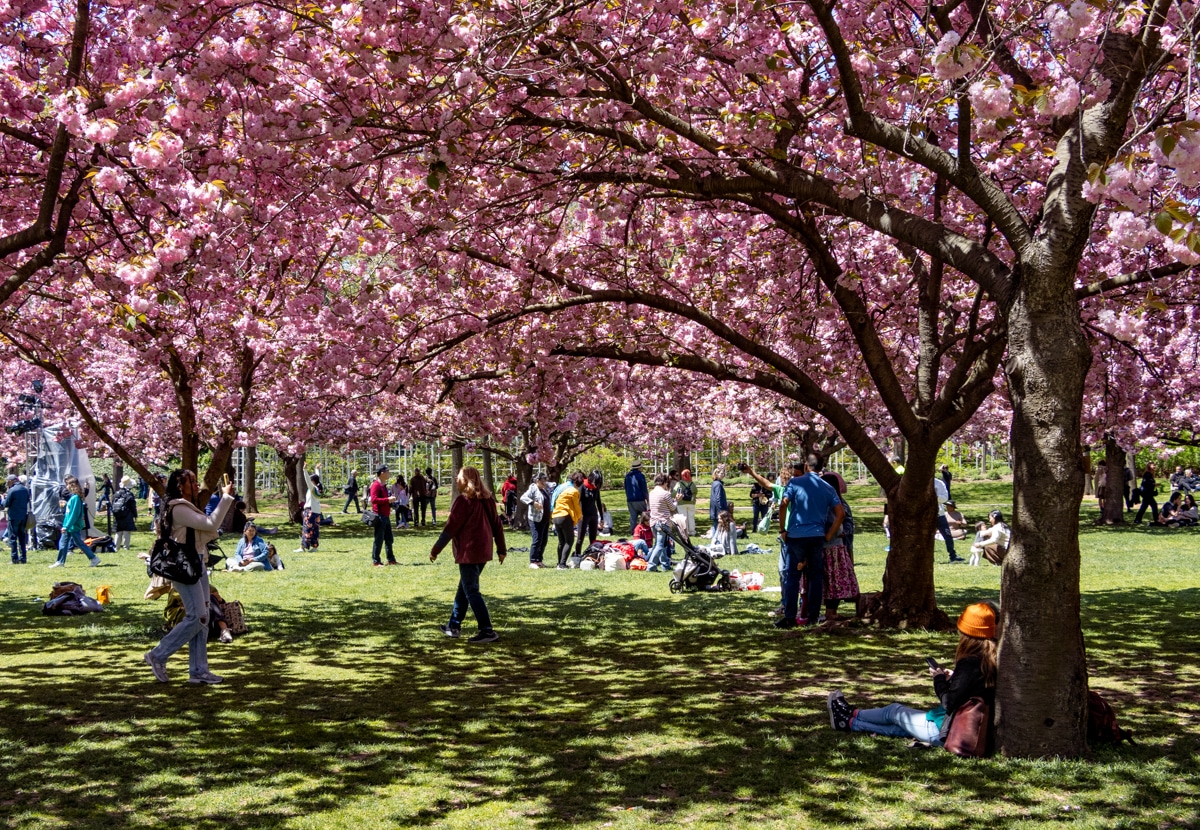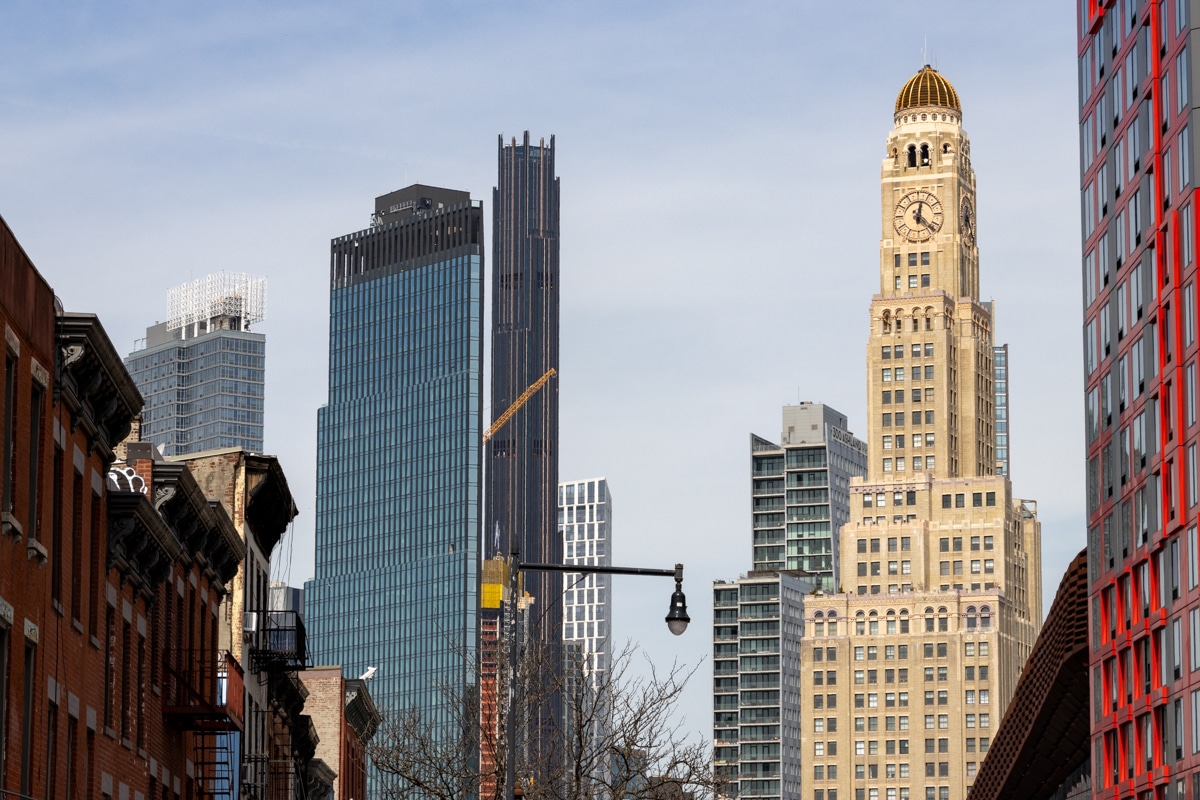Past and Present: Congregation Baith Israel
A look at Brooklyn, then and now. In 1855 a group of twelve Bavarian, Dutch and Portuguese Jews gathered in a Brooklyn home to found the United Brethren Society, a mutual benefit society that pooled its resources to aid its members with medical and burial expenses. A year later, that same group came together to…

A look at Brooklyn, then and now.
In 1855 a group of twelve Bavarian, Dutch and Portuguese Jews gathered in a Brooklyn home to found the United Brethren Society, a mutual benefit society that pooled its resources to aid its members with medical and burial expenses. A year later, that same group came together to form a congregation. These were men who had settled near Atlantic Street, in Downtown Brooklyn, and were engaged in all kinds of professions: a hatter, furrier, carpenter, attorney, tailor, barroom owner, pawn broker, a rabbi and more.
Most of them had been members of Manhattan synagogues, and still took the ferry ride across the river for Shabbat services on Friday night. Local legends say they rowed themselves across on rowboats, and founded a Brooklyn synagogue because they got tired of the trip. However dedicated that sounds, all authorities chalk that one up to urban legend, similar to walking two miles to school uphill, in snow, both ways. The ferry was right there.
They first held services at a rented space at 155 Atlantic Street, now Atlantic Avenue. Within five years, the congregation had grown to 35 families, and the decision was made to build their own house of worship. A plot on the corner of Smith Street and Boerum Place, next to a stable, was purchased for $3,000, and the cornerstone of Baith Israel was laid in January of 1862, and the synagogue was dedicated that same year, in August. It was the first Jewish synagogue to be built specifically as a synagogue in all of Long Island. Williamsburg’s Kahal Kodesh, the oldest Brooklyn congregation, did not build its own building on Keap Street until 1867.
On the day of dedication, Baith Israel’s congregation had a parade down the street to their new home, with music and celebration, as the scrolls were placed in a new ark. The Brooklyn Eagle, which covered the dedication, wrote that the interior of the sanctuary was arranged in the traditional Orthodox manner, with pews for the men set up around a central reading table, and a separate gallery for the women. Baith Israel’s Sunday school, which met in the basement, was the first Jewish school in Brooklyn. The school began in 1864 with volunteer teachers, and was free. The teachers came from the Hebrew Free Sunday School Teacher’s Association. By 1890, they had 160 students. At its peak, it had over 500.
No religious institution is without those who disagree, and factions, schisms, and splitting off to form new congregations occurred here as well. Before the building was even built, a group split off in 1861 to form Beth Elohim. Most of the conflict was over ritual, and even led, in 1866, to a fight between two rabbis. They would be another splitting off, and several attempted mergers with other congregations, but the folk at Baith Israel just couldn’t agree on worship customs. The Orthodox, the Reform and the Conservative elements could not agree on much of anything. But changes did come.
In 1876, the congregation overwhelmingly voted to change the seating in the sanctuary, re-orienting the pews like Christian churches. They also voted to allow mixed seating, with men and women sitting together. However, they voted on it, but didn’t get around to doing it until 1879. Everything was changed around, new seating was installed, and the sanctuary was re-dedicated. Although almost the entire congregation spoke German, they also began to have services in English, and they Anglicized the name to Beth Israel.
In 1889, another renovation added more pews, a new roof, and other changes to the building. Change was a constant here, which was a problem for the leadership of the congregation. They were extremely Orthodox in some things, and very Reform in others. It was hard for Beth Israel to keep a rabbi, because they just couldn’t find a perfect fit. By 1904, membership had dwindled down to 30, there was a fire in the building which almost destroyed it, and new innovations, like a mixed –sex choir with a pipe organ had been rejected by the more Orthodox members. The congregation decided that part of their problem was the building.
A fire in 1904 almost destroyed the synagogue, driving members away. It was also in an inconvenient location for many members, and improved mass transit opportunities made it easier for people to go elsewhere. The decision was made to sell the building and move. They purchased the former Middle Dutch Reformed Church, at Tompkins Place and Kane Street in Cobble Hill. It had been built in 1855, and was a beautiful Romanesque Revival Church with an adjacent school building. Its last occupant had been Trinity German Lutheran Church. They also hired a new rabbi, Israel Goldfarb, who had only graduated from the Jewish Theological Seminary three years before. This would be his first and only position. Rabbi Goldfarb would be with his new congregation for almost sixty years.
The new building and the new rabbi energized the failing congregation, and they began to grow again. Rabbi Goldfarb was a talented musician, and wrote composed several songs that are still in use in most Ashkenazi synagogues. He and his brother Samuel Goldfarb compiled the first American collection of Jewish songs, called the Jewish Songster, for children. Israel Goldfarb also was Professor of Liturgical Music at the Jewish Theological Seminary, and in 1949 founded the School of Sacred Music at the Hebrew Union College.
His connection with music is best known through a young man in his congregation whom he Bar Mitzvahed in 1913, composer Aaron Copland. Copland would later say that Rabbi Goldfarb’s support helped him in his choice of music as a career. His father wanted him to become a layer. Goldfarb encouraged the talented Copland to go to Europe for more study in composition. That led to a lifetime of incredible music that his still popular today.
Meanwhile, in 1908, Beth Israel merged with Talmud Torah Anshei Emes, on DeGraw Street. The official name of the new blended congregation is Beth Israel Anshei Emes, but everyone calls it the Kane Street Synagogue. Over the last century, changes came, another horrible fire, a mixed-sex choir, renovation of an old building, a great loss of membership, financial hardship, and several near-misses with closing, then a great rebirth have all left their mark on the congregation.
Today they are doing fine, embarking on ambitious renovation projects and serving all members of the community. As a congregation used to firsts, they were the first synagogue in the Northeastern United States to be led by a woman, when they chose Debra Cantor to be their rabbi in 1988. This led to yet another split, as those who did not agree with the choice formed their own Orthodox Congregation in the Heights. They also welcome gays and perform same-sex commitment ceremonies, leading to a protest by the Westboro Church, in 2009. (A sure sign you’re doing something right.) The Kane Street Synagogue is the oldest continuously operating synagogue in Brooklyn, and they still use the same Torah scrolls that were danced down Smith Street in 1862. FOr a more complete history of the Kane Street Synagogue, please see their website.
The old Baith Israel building stood until at least the 1920s. The photograph taken by Eugene Armbruster in 1923 shows tall fencing up next to the wall, and the site looks like it was going to be torn down. I’m not sure what was built in its place. In 1953, ground was broken on this site for the new Brooklyn House of Detention. The jail took three years to build, and cost the city almost 11 million dollars by the time it welcomed its first residents in 1957. It replaced the infamous Raymond Street Jail, which was located near Brooklyn Hospital. GMAP












What's Your Take? Leave a Comment